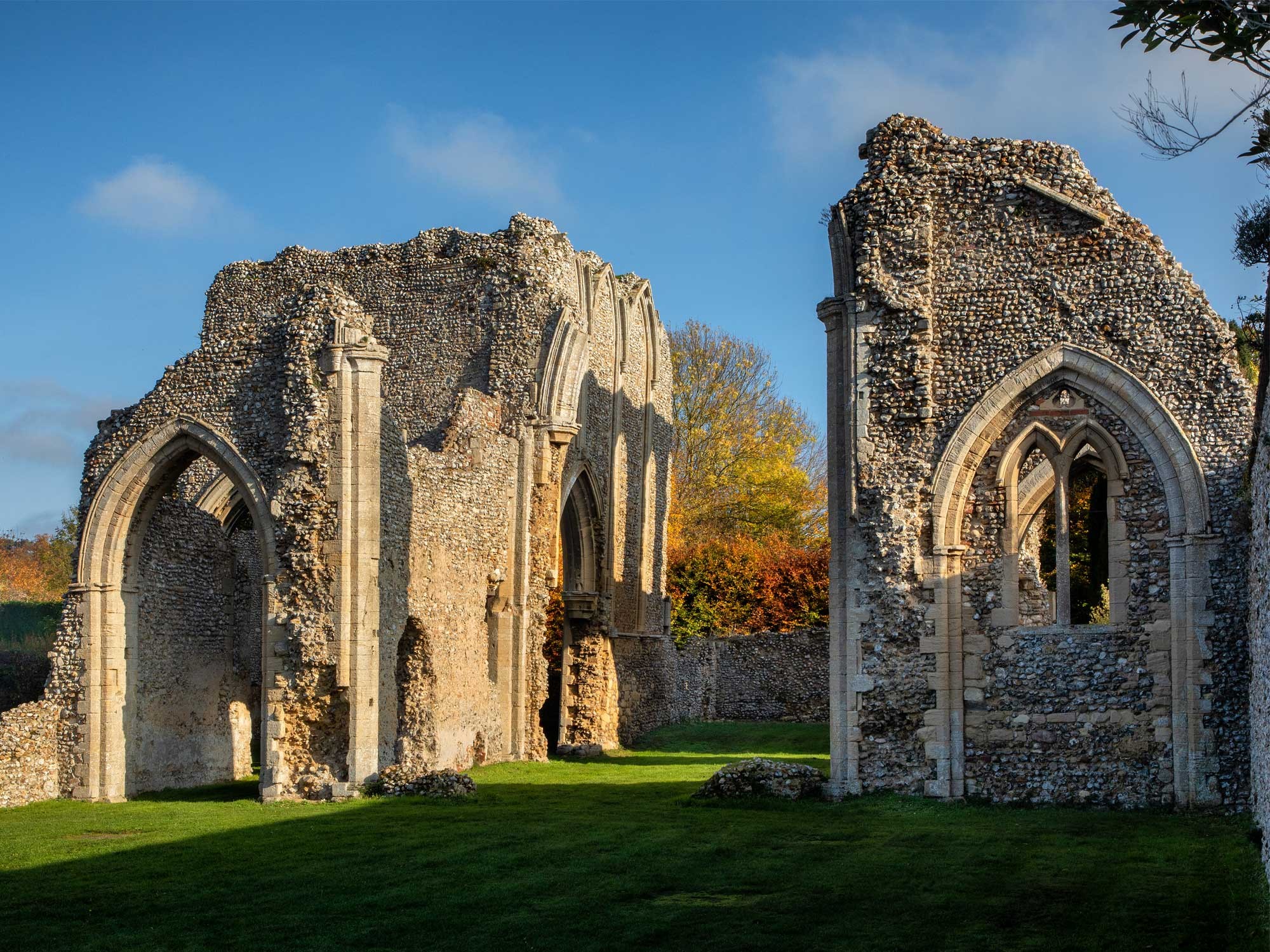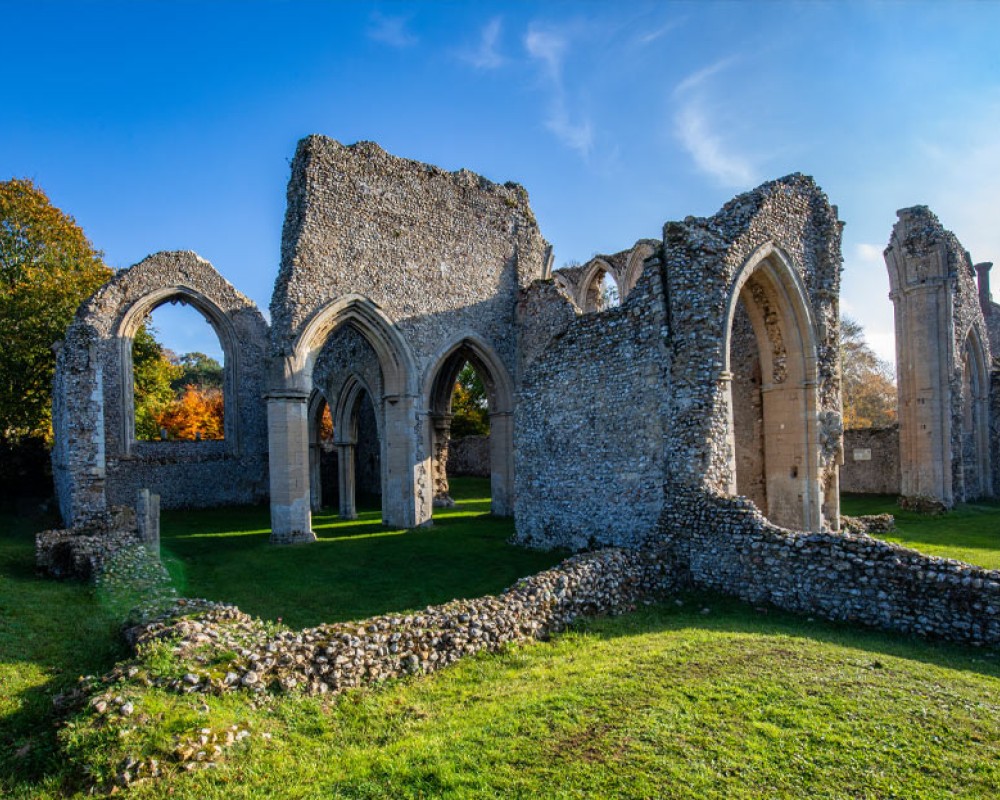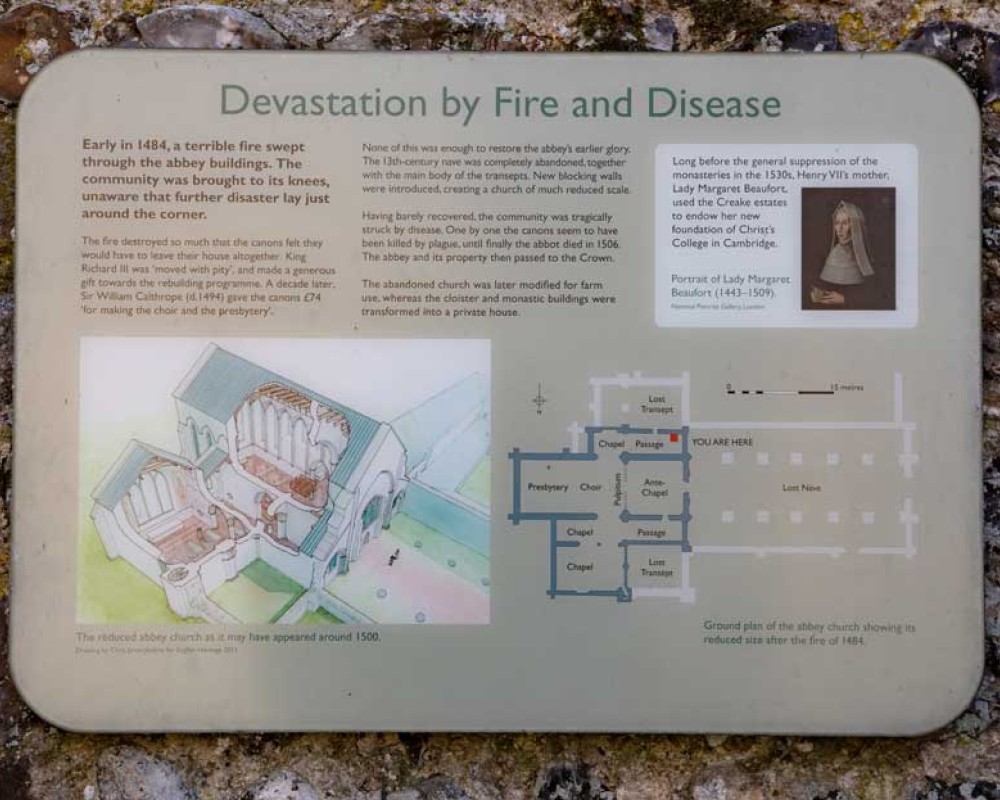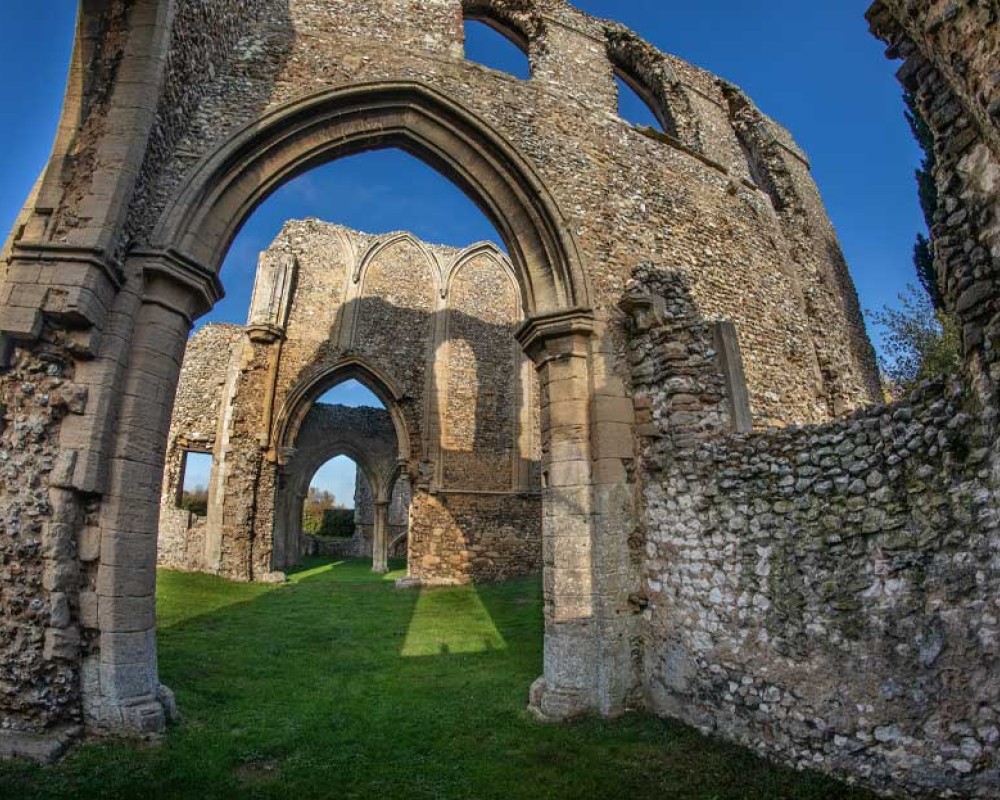
If walls could talk
The rise and fall of Creake Abbey, whose spectacular ruins still capture the imagination of tourists and locals alike
Beside the River Burn a collection of monastic ruins stand majestically in the picturesque Norfolk countryside. Preserved under the care of English Heritage, they mark the site of a once magnificent abbey and hold an intriguing tale of fortune and fire.
The original chapel was founded in 1206 by Sir Robert de Neresford and his wife Lady Alice de Neresford, one of several chapels and churches the couple established in Norfolk. Sir Robert was a wealthy and powerful man, a former Constable of Dover Castle, and had moved back to Norfolk after inheriting Neresford Manor. In a deeply religious society, many knights and noblemen sought to display both their wealth and piety by constructing religious buildings throughout their locality.
Eleven years after founding the chapel, Robert de Neresford joined his nephew in a navel battle fought in the Straights of Dover, securing victory on the 24th August 1217, St. Bartholomew’s day. In honour of this triumph, he founded the Hospital of St. Bartholomew next to the Chapel of St. Mary. Records of the time state that there were ‘13 beds for paupers’ tended by a Master and four Chaplains. The first Master of this hospital was William de Geyst, who, with the blessing of Lady Alice de Neresford, joined the order of St Augustine. The chapel became a priory, and a monastic order was established. Augustinian monks believed in the principals of chastity, poverty, learning and love; helping others in a hospital setting enhanced these vows.
After several successful years, patronage was granted to Henry III and the priory was given abbey status, becoming St. Mary of the Meadows in 1231. Pledges of wealth followed, with the acquisitions of churches, land and their ensuing tithe payments, leading the abbey into prosperity and resulting in the building of a cloister and accommodation. There’s evidence that the hospital was still being used in some capacity up until 1397.
This golden age came to an abrupt end in 1484, when a ferocious fire ravaged the abbey, rendering much of the complex unusable and laid to ruin. The abbot sent word to the King,



Richard III, who was sufficiently moved to donate around £46 towards the costs of rebuilding, though progress was slow. Robert Walsingham was appointed abbot in 1491 and drove the project forward, annexing an area of the building to create a smaller, but useable, chapel. Additional financial aid came in 1495 in the form of a bequest of £75 from Sir William Calthorpe, a member of the local nobility with many ancestral graves in the consecrated ground of the abbey. Sadly, these donations were not enough to fully restore the buildings to their former glory and much of the site was abandoned.
North Norfolk suffered greatly with plague, or ‘sweating sickness’, with significant outbreaks occurring along the coast throughout the majority of 13th and 14th centuries due to poor sanitation and overcrowding in towns. It’s possible infection spread to the abbey through those cared for by the monks, or by their work within the community. Disease and death swept through the order until the abbot, Giles Shevington (Sherington), stood alone. Having been appointed in 1503 his three-year tenure abruptly ended upon his death 12 December 1506.
With no survivors remaining, the order was dissolved, and the estate reverted to The Crown. In 1507 the King’s grandmother, Lady Margaret Beaufort, donated ownership of the abbey to her newly created foundation, Christ’s College, Cambridge. Parts of the cloister and walled garden were amalgamated into a farmhouse, with the various other standing buildings becoming glorified barns. The once great Creake Abbey faded from history and descended into obscurity.
The next mention we find of Creake Abbey is in the engravings of Samuel and Nathaniel Buck, a pair of brothers who set about recording monuments and ruins throughout England and Wales, starting in 1726. Their engraving entitled ‘The West View of Creake Priory’ provides fascinating insight into the condition of the abbey after 200 years of abandonment.
After another century passed, RM Phipson, Chief Architect of the Diocese of Norwich, attempted restoration work in 1874 to preserve what remained of the abbey complex.
Today the ruins are free to visit, providing endless inspiration for artists, poets and photographers alike. Take a stroll through the remaining stonework to contemplate the astounding 800 years of history contained within these ancient walls.
